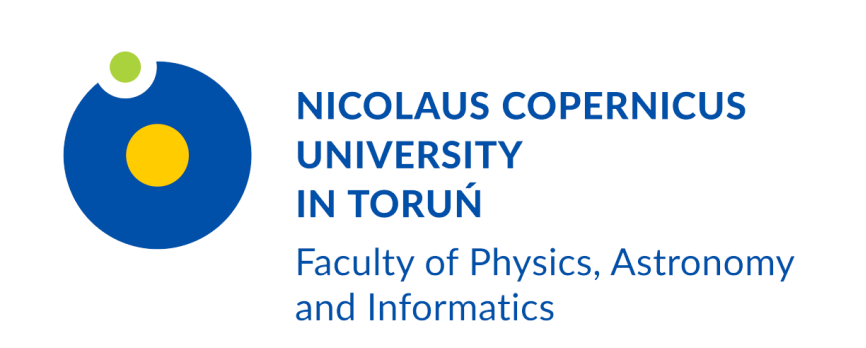General Seminar
current | 2024 | 2023 | 2022 | 2021 | 2020 | 2019 | 2018 | 2017
General Seminar takes place every Monday at 11.15 in Piwnice, radioastronomy seminar room.
Remote participation via the BigBlueButton (BBB).
22 April 2024
“Orbital analysis of multiple systems with jovian planets”
prof. dr hab. Krzysztof Goździewski (Institute of Astronomy, Nicolaus Copernicus University)
Abstract:
In the past thirty years, a category of planetary systems that includes large Jupiter-like planets has been identified. The gravitational interactions between the components of these systems have a measurable impact on orbital models that describe the observational time series, particularly through radial velocity, astrometric, and chronometric methods. The aim of this presentation is to introduce systems that contain Jovian planets for which it is particularly important to base the orbital model on physical and mathematical principles. These principles are generally described as the N-body problem. In this context, we will analyse a template planetary system HD160691. Iterative studies of such systems provide information on the orbital architecture, distribution of orbital parameters, and planet masses, which may become increasingly important for extended observational intervals as new data becomes available and modelling methods are refined.
29 April 2024
“Understanding exoplanets through their host stars”
prof. Vincent Van Eylen (Mullard Space Science Laboratory, Department of Space and Climate Physics, University College London, UK)
Abstract:
During the past 30 years over 5000 exoplanets have been discovered. I review what is known about these planets and their formation. I show how most of what is known about these planets is inferred indirectly through their host stars, making it crucial to understand stellar properties to learn about exoplanet systems. I discuss the architecture of exoplanet systems, and highlight a fascinating paradigm shift in exoplanet science: the realisation that small planets come in two distinct flavours, i.e., super-Earth and sub-Neptune planets, separated by a radius valley. The valley is key to understanding the formation of small planets, as its location and slope as a function of orbital period are shaped by stellar radiation, disk properties, and planet composition. I show what can be learned through detailed modelling of Kepler and TESS transiting planets, and what has been learned through improving stellar parameters using spectroscopy, Gaia, and asteroseismology. Turning to giant planets, I show how TESS observations have been used to infer the occurrence of Jupiters for different types of stars, and what this implies for planet formation models. Finally, I show how homogeneous studies of stellar properties such as mass, radius, and age, are crucial to better understand the diversity of exoplanets and discuss the important role of the upcoming PLATO mission in this regard.
6 May 2024
“The binary context of blue large-amplitude pulsators”
prof. dr hab. Andrzej Pigulski (Astronomical Institute, Faculty of Physics and Astronomy, University of Wrocław, Poland)
Abstract:
Blue large-amplitude pulsators (BLAPs) form a distinctive group of pulsating stars discovered a few years ago and now have about 70 identified members. These stars exhibit pulsation periods ranging from 15 to 60 minutes, characterised by non-sinusoidal light curves with peak-to-peak amplitudes of up to 0.4 mag in the V band. They pulsate radially. In the Hertzsprung-Russell (H-R) diagram, BLAPs are located between hot massive main-sequence stars and hot subdwarfs. Revealing the evolutionary status of BLAPs is presently a big challenge. To address this problem, several different evolutionary scenarios have been proposed. Crucial to these scenarios is the assumption that these stars are or were the members of binary systems. In my talk, I will summarise the current findings related to the binarity of BLAPs and discuss them in the context of the proposed evolutionary scenarios.
13 May 2024
“Oxygen in meteorites”
prof. dr hab. Szymon Kozłowski (Astronomical Observatory, University of Warsaw, Poland)
20 May 2024
“Solar modulation of galactic cosmic rays”
dr hab. Agnieszka Gil-Świderska, prof. UwS (Institute of Mathematics, Siedlce University; Space Research Centre, Polish Academy of Sciences)
Abstract:
Cosmic rays are charged particles which constantly arrives at our planet There are ~ 90% of protons, ~ 9% of α particles, as well as small quantity electrons and nuclei of heavier elements. Part of the cosmic rays stream reaching Earth is of extragalactic origin, some come from the center of our Galaxy, while the source of cosmic rays of the lowest energies is Sun. A common way to register galactic cosmic ray (GCR) and its variability are measurements made by a global network of ground neutron monitors (NMs), operating continuously since 1951. They measure secondary cosmic rays: the nucleonic component of the atmospheric cascade initiated by primary cosmic rays. NMs show fluctuations in the original cosmic ray intensity. These variations occur as a result of a solar changeability and reflect the level of solar activity. The basic periodicity observed by neutron monitors is the 11-year cycle, which is a reflection of the Schwebe cycle, characterized by consecutive periods of amplified solar activity of about 11 years. There is a high anti-correlation between the number of sunspots that perfectly illustrate the level of solar activity and the GCR changeability. The next cycle is the 22-year Hale cycle, related to the reversal of the Sun’s magnetic field polarity. There are observed also shorter periodicities: connected to solar rotation, as well as transients appearing in solar behavior. During this seminar there will be discussed various aspects of short-term modulation of GCR, based on the neutron monitors observations, as well as mathematical modeling of GCR transport.
27 May 2024
dr Koichiro Sugiyama (Thai National Radio Astronomy Observatory at the National Astronomical Research Institute of Thailand (NARIT))
3 June 2024
“Interstellar vagabonds in the Solar System”
dr Michał Drahus (Astronomical Observatory, Faculty of Physics, Astronomy and Applied Computer Science, Jagiellonian University, Kraków, Poland)
10 June 2024
prof. Norbert Werner (Department of Theoretical Physics and Astrophysics, Masaryk University, Brno, Czech Republic)
24 June 2024
prof. Markus Boettcher (Centre for Space Research, North-West University, Potchefstroom, South Africa)

 Piwnice k. Torunia, 87-148 Łysomice
Piwnice k. Torunia, 87-148 Łysomice